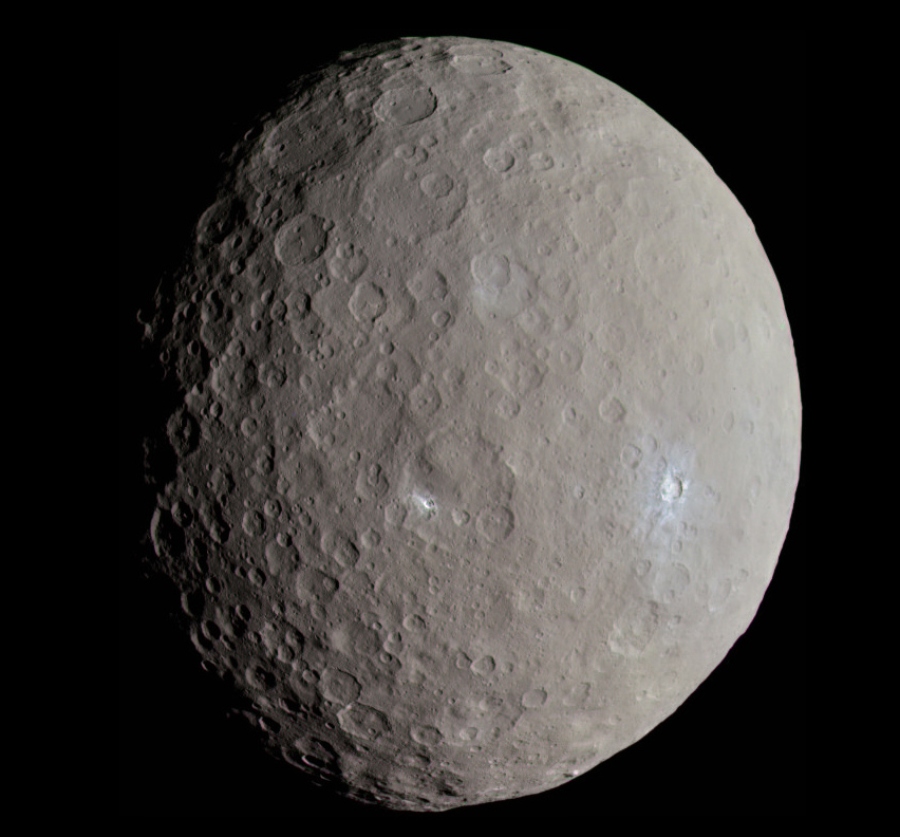Scientists at NASA’s Jet Propulsion Laboratory say they’ve confirmed the existence of a salt water reservoir on the dwarf planet Ceres, which lives in the main asteroid belt between the orbits of Mars and Jupiter. The scientists say the reservoir on the 580-mile-wide dwarf planet is likely 25 miles deep and hundreds of miles wide. The salty water even percolates up from the reservoir to Ceres’ surface and forms a brilliantly reflective crust.
Mystery Solved 🧐
— NASA JPL (@NASAJPL) August 10, 2020
Bright areas on dwarf planet Ceres come from salty water underneath. Data from @NASA_Dawn answer two long-unresolved questions: Is there liquid inside Ceres, and how long ago was the dwarf planet geologically active? https://t.co/WWIA2xzAFj pic.twitter.com/FENnH4h7Q2
Astronomy reported on the discovery, which was described in a collection of papers published in Nature Astronomy, Nature Geoscience, and Nature Communications. The scientists made the discovery upon reviewing data collected by NASA’s now-retired Dawn spacecraft.
“Past research revealed that Ceres had a global ocean, an ocean that would have no reason to exist [still] and should have been frozen by now,” study co-author and Dawn team member, Maria Cristina De Sanctis, told Astronomy. De Sanctis added these findings show part of this ocean may still be present in liquid form below Ceres’ surface.

To make their discovery, the scientists focused on Ceres’ 57-mile-wide Occator Crater, which is pictured immediately below. The scientists focused on Occator because they were trying to understand what caused its brilliant bright spots to form. While scientists knew the bright spots, observed by Dawn before the probe was retired, were formed by salt water—or “brine”—they weren’t certain of where it came from.
Measurements taken by Dawn, however, showed that the crusty bright spots do indeed still contain liquid water. Subsequently, that must mean the brine reached the dwarf planet’s surface recently. This must be the case because it only takes a few hundred years for water to evaporate off Ceres.

Dawn Principal Investigator Carol Raymond said in a NASA news post that the brine is able to reach Ceres’ surface thanks to whatever body formed Occator. “[T]he impact… created large fractures that could reach the deep, long-lived reservoir, allowing brine to continue percolating to the surface,” Raymond told NASA.
Despite the significance of this discovery, it seems that research into Ceres is just heating up. Another one of the study’s co-authors, Dawn project scientist Julie Castillo-Rogez, submitted to NASA a study describing a $1 billion mission that would land a probe on Ceres. Unfortunately, in regards to a timeframe, NASA only says that the probe could fly sometime before 2032. Until then, we’ll all just have to avoid becoming salty by focusing on what’s happening with Mars.

Feature image: NASA / JPL-Caltech